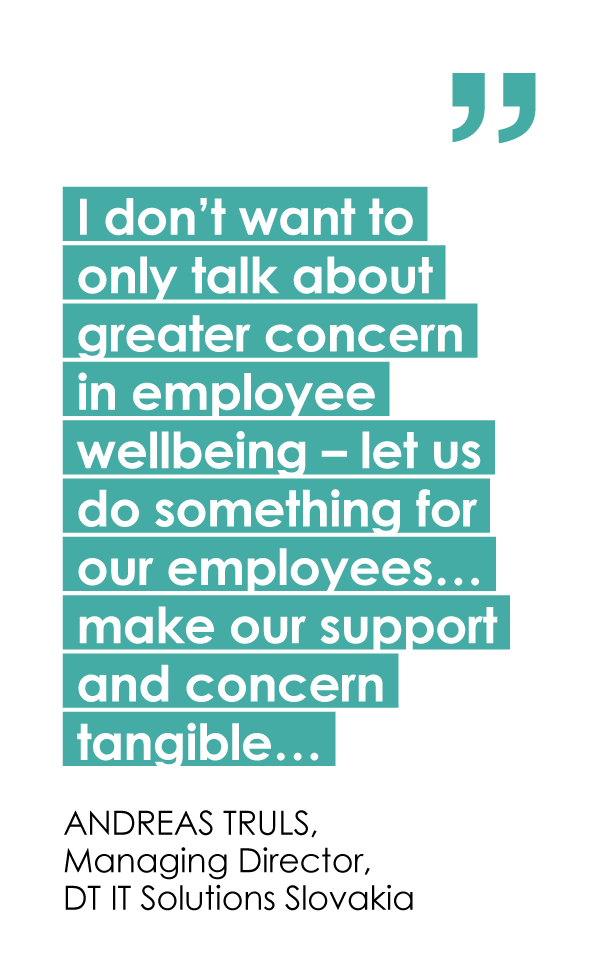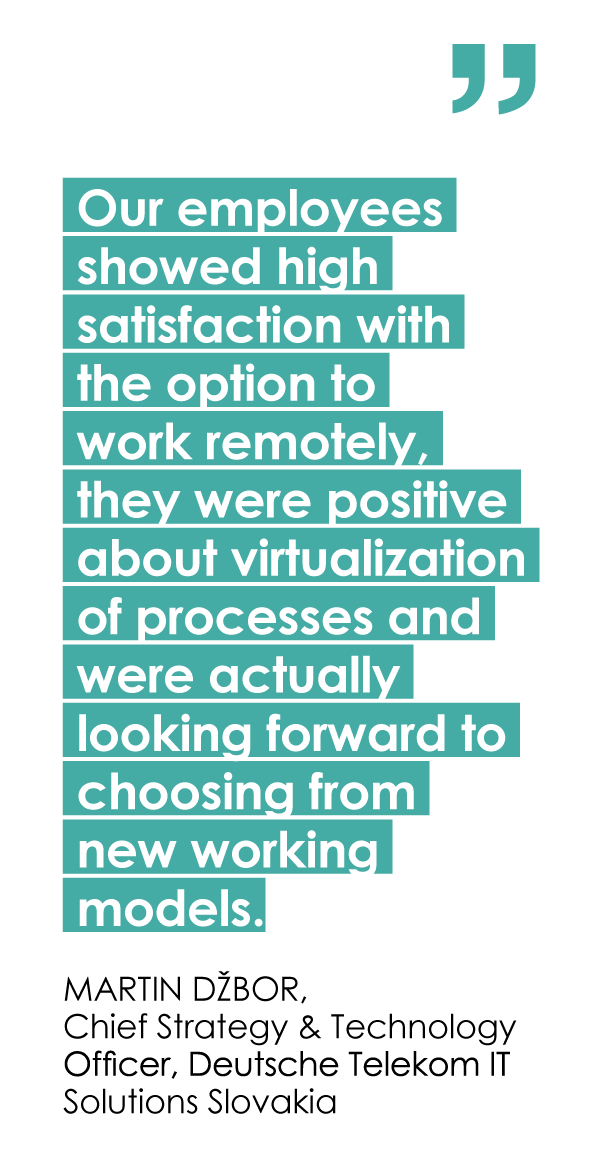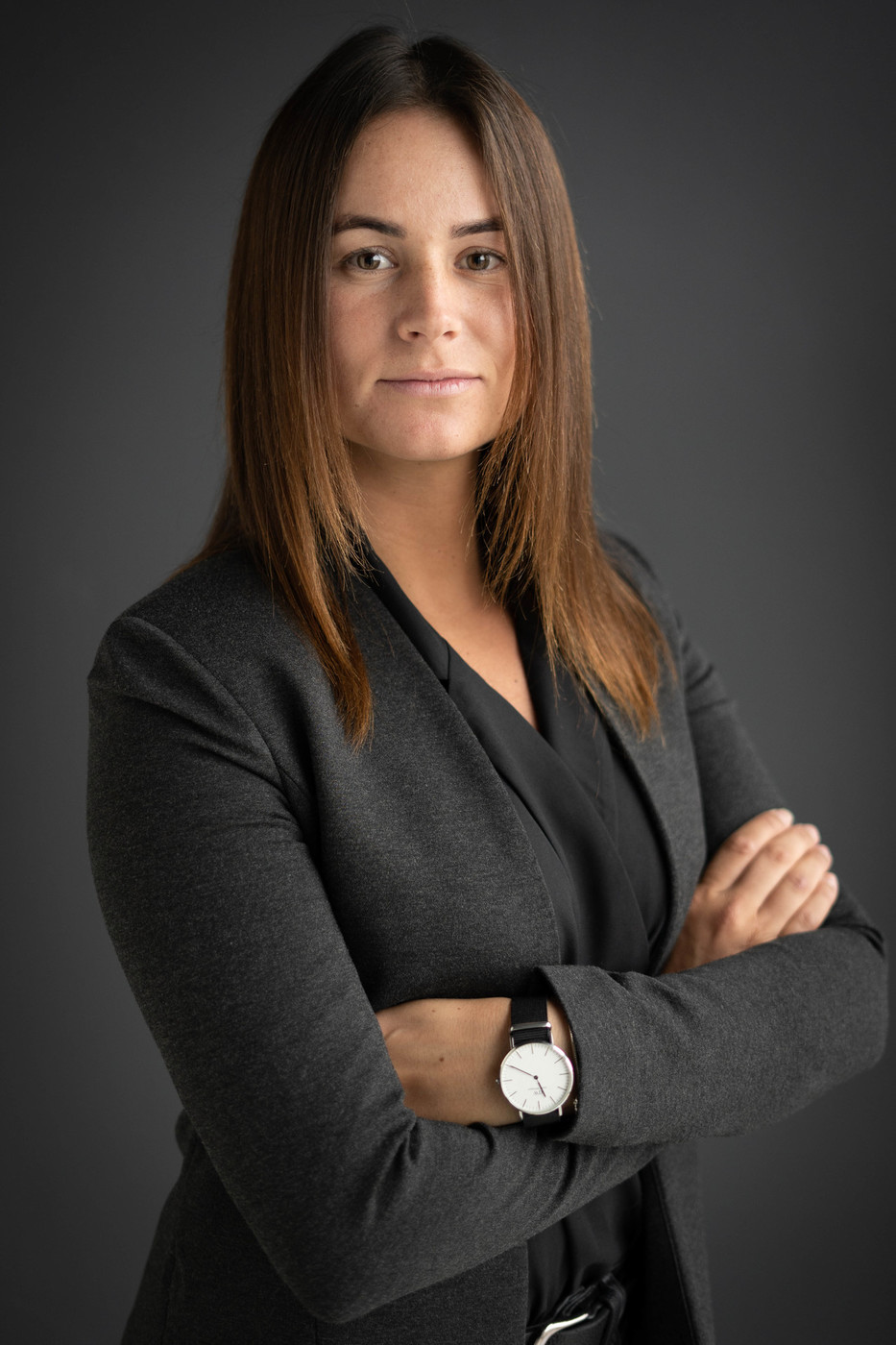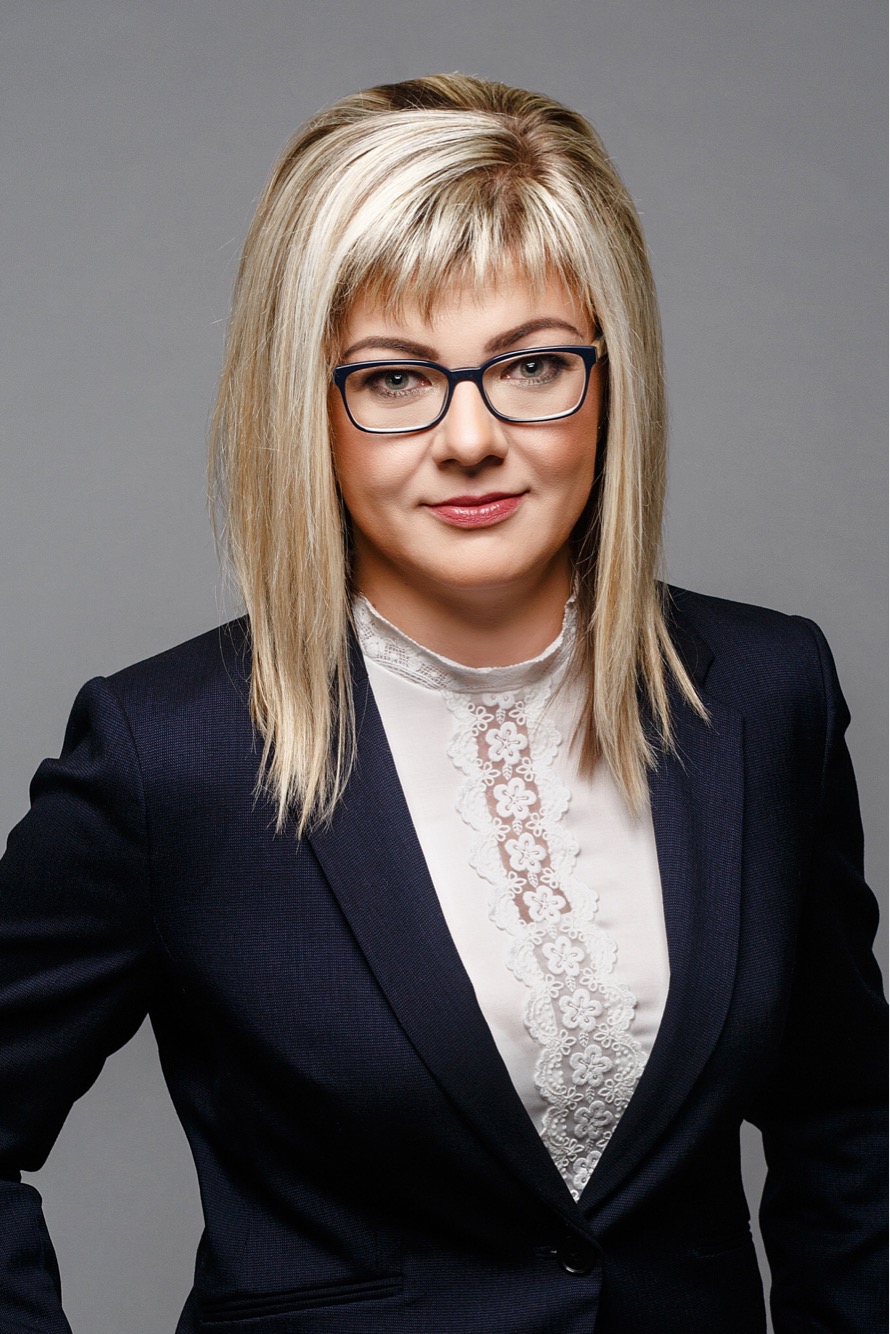Deutsche Telekom IT Solutions Slovakia (DT ITSO SK) is a typical example of the trend. With the majority of staff being office-based, it moved to home-based operation within days. It came as a natural step in the existing business continuity management (BCM) plans. More than 90% of IT staff temporarily became home workers as a result of implementing internal health safety measures. An action theoretically noted in BCM plans became reality and brought unprecedented changes to the fine-tuned working patterns and processes, with all leaders suddenly managing remote and distant teams.
From a temporary solution to a long-term action
Despite the potential to disrupt everything – the processes, the engagement, the culture – many players in the sector saw remarkable resilience of their operations. In fact, Business Services sector has come from the first wave as least affected. The changed conditions in DT ITSO SK have led to a new form of working but the core principles remained very resilient. The new way of working has had no negative impact on the quality of provided IT and business services. In many teams, “a-ha” moments came when the specialists realized that, in fact, they do not need to be permanently located next to their colleagues to deliver excellent results. Individual specialists, the teams, the entire company staff learned to perform even more efficiently when being permitted to combine the on-site presence with the remote mode.

The temporary change worked. It looked obvious to extend its status without any limits. However, and despite the known proverb advising one not to change the winning horses, the management of DT ITSO SK decided to look further into the future. A newly established transformation unit has been challenged to explore the changes arising from the pandemic way of working as an opportunity. An opportunity to re-design and evolve the old and new ways of working to make them more resilient and capable to reap benefits over the mid to long term. The brief from the new managing director, Andreas Truls, was short but razor-sharp: “Think less of space for seating our people, think of less time spent commuting and dedicated to creating and innovating. I don’t want to only talk about greater concern in employee wellbeing – let us do something for our employees… make our support and concern tangible…”
As the biggest IT company in the Košice region – and one of top 5 players in the IT sector in Slovakia – the transformation team accepted the short-term solutions as yesterday’s success and started exploring the longer-term impact. Successful companies plan for the long term. The leaders shape and inspire by proactively adapting their corporate culture accordingly.
Approved by management employees (and their satisfaction)
The transformation was set up as a full-scale project, with its ambition reflected in its name – “New Normal”. With the target being too open at the outset, this brought in an opportunity to run the New Normal in agile style. An initial set of objectives and expected key outcomes has been settled in the small core team in a matter of days. Each objective was treated as a product – something that needs to satisfy the needs of the end consumers – more than 4 000 employees of the Slovak subsidiary of Deutsche Telekom group. To keep the focus on the outcomes and their delivery (rather than merely discussing options), each objective was adopted by a senior leader acting as a product owner. Each product owner, in turn, built around themselves a small, motivated team of colleagues to quickly move from ideas, through concepts and towards implementation plans.
The local version was connected to the running global initiatives. Thanks to the orientation on tangible outcomes, the leaders of the New Normal transformation were able to share their ideas, concepts and practices and through them shape thinking and implementation in other subsidiaries of T-Systems International and Deutsche Telekom groups. Slovakia was among the first three countries which were able to show their target model design and run it through the ultimate test – the acceptance by local employees…
“We carried out an analysis in multiple dimensions. More than 20 factors were identified to have some impact on the future way of working.” shares Martin Džbor, the strategist of DT ITSO SK in Slovakia, “The team has showed the courage to step in front of employees with incomplete, half-baked ideas – we conducted a survey among close to 2 000 of our colleagues to learn how the current situation, full of uncertainties, altered their experience as employees. The replies gave us a strong mandate in designing the future. Our employees showed high satisfaction with the option to work remotely, they were positive about virtualization of processes and were actually looking forward to choosing from new working models. Models, which they associated with a greater flexibility, higher perceived (and actual) productivity as well as more “personalized” engagement options for each employee”.
Co-working rather than co-sitting spaces are the future
Considering the feedbacks from both, staff and leaders, and in line with data from the market, our customers and operational indicators, the New Normal team has sketched a target model of what the new work setup may look like in upcoming years. To satisfy the expectations of employees and leaders for smoother co-operation and more flexible seating, the project had to alter the existing, no longer effective office design elements that are contradicting the designs of the future. The company committed to offering a workplace that serves all kinds of individuals, projects and teams. Three main types of future working modes emerged from this design exercise that represent different needs of different audiences: the teleworking mode allowing on average one day on-site and four at home, the office mode expecting four days on-site on average, and the hybrid mode roughly expecting half time on-site and half remotely.
“We expect success in maintaining our high degree of reliability, security and effectiveness of employees both within office and home office setups. At the same time all this can now be achieved with significantly less office area to lease. Our main goal now is to optimize office infrastructure, re-think and refurbish our workplaces into flexible, yet standardized, multifunctional areas and tools focusing on co-working rather than co-sitting.”, offers Alena Ronďošová, the tribe lead and the project lead for the New Normal project, as a sneak peek into the future.

The implementation of workplaces that includes co-working and collaboration spaces in various sizes, open and private concepts, meeting, conference and co-creation rooms, as well as individual desks will foster collaboration, promote learning and sharing among employees, and in consequence, nurture even stronger Magenta culture and attitudes.
Speaking about the overall ambition of the project, Džbor, as the architect of the future model, talks about significant investment exceeding three million euro to implement it. “This is a true transformation, and we treat it as an investment opportunity. The investment is needed into the physical building infrastructure, digital infrastructure and collaboration toolsets, that’s obvious. However, more subtle areas where we also need to invest include what I would call ‘employee experience’ features.” continues Ronďošová, “We need to ensure, for example, that the connectivity of our employees from their homes is reliable and possibly redundant. Hence, we need to invest and support connectivity from home. From the health perspective we need to think of investing into ergonomics of home IT equipment, in particular, and home offices in general.”
The multi-million investment is only a part of the story, however. As New Normal leaders emphasize, there is no way to obtain such a volume of cash to invest from the mother company. In the current climate, all companies seek efficiencies and consolidation of costs. If the team wants their dream design implemented, the investment budget needs to be found locally. The transformation team succeeded in identifying specific cash savings to fund their ambition. “The savings are a tricky part when you talk about things that influence employee experience. However, I am really proud that together with our facility managers and controllers we identified real savings in areas like lease contract optimization, reduced energy consumption or transfer of physical business trips radically into the digital domain”, explains Džbor, sharing some of the sources to fund the project. “In total, the project identified savings roughly double the size of the investment. In other words, our ambition is not only doable, but will have a financially positive impact on our costs over the next three years!”
The New Normal for Košice office
Deutsche Telekom IT Solutions Slovakia sees less than a fifth of its staff continuing with the ‘old’ way of working and spending time in the central office building. About a quarter of staff will be working dominantly from their homes in the near-term future. These colleagues are the future users of the emerging co-working spaces that shall facilitate agile teamwork and dynamic co-operation with limited health risks. The majority of staff is likely to function in a hybrid mode, dividing their time between more interactive sessions in the co-working offices and shared desk hubs, and more concentrated self-managed operative work doable in their home environment. Such a mix carries the potential to reduce the total square footage needed to a half of 2019 figures!
About Deutsche Telekom IT Solutions
Deutsche Telekom IT Solutions Slovakia entered Košice region in January 2006 under the name T-Systems Slovakia and has been inextricably linked with this region ever since. Deutsche Telekom IT Solutions, as the company is known from July 2020, is a modern provider of IT and business services stepping towards a future based on digital technologies and on an innovative and product-oriented company model. Over the last decade, the company has managed to grow from scratch to the second largest employer in the eastern part of the country. At the same time, with more than 4 000 employees, the company is one of the top employers in Slovakia and a company with one of the highest shares of added value within the IT industry in Slovakia.
Martin Džbor, Chief Strategy & Technology Officer
Alena Ronďošová, Tribe Lead and Project Lead for the New Normal project
Katarína Miklošová, Corporate Communication Specialist





Follow us